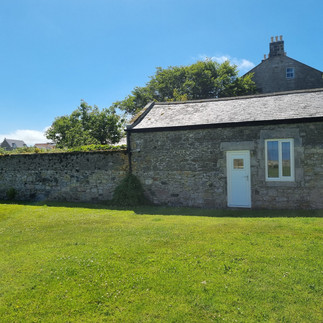If you have ever owned a listed building, you may have come across what is known as a curtilage listed property. But what exactly does curtilage listed mean and what importance does it hold?
What does Curtilage Listed Mean?
In common law, ‘curtilage’ is defined as the grounds immediately surrounding or directly associated with a designated heritage asset, which can include landscape features as well as buildings, such as walls and outbuildings. What is included within the curtilage will depend upon the circumstances of the particular property, and not all listed buildings have associated curtilage listed assets.
Curtilage listing is where property, objects and structures are recognised as listed by virtue of falling within the curtilage of the associated listed building. Consequently, curtilage listed structures are afforded the same protection and restrictions imposed upon the associated listed building.
How to Know if a Structure is Curtilage Listed
The law specifies that structures which pre-date July 1948 and are within the curtilage of a listed building are to be treated as part of the designated heritage asset. Identifying whether a building or structure falls within a curtilage listing and the extent of that curtilage can be challenging. Working this out is necessary because altering or demolishing a curtilage listed structure will require listed building consent. Undertaking works without having obtained Listed Building Consent when it is needed is a criminal offence.
There are three key factors to consider which can define whether a heritage asset is curtilage listed including:
the physical footprint and layout of the listed building and the structure in question;
their ownership, both historically and at the date of the original listing;
and the purpose or function of the relevant asset again both historically and at the time of the listing.
These criteria are based upon the current legislative provision in the Planning (Listed Buildings and Conservation Areas) Act 1990 and consideration of listed buildings and curtilage structures in legal cases to date.
How does Curtilage Listing Differ from Traditional Listing?
As mentioned above, if your property falls within the curtilage of a listed building and meets one of the three criteria, it will be safeguarded by the same level of protection applied to the principal listed building. The National Planning Policy Framework (NPPF) (MHCLG 2021) provides an outline for the appropriate management of heritage assets, whilst local planning policy, dependent upon the area, often have their own specific policies and guidance relating to the development of listed buildings within their local plans. As such, any proposed development, including alterations and/or demolition, to such structures must gain Listed Building Consent often alongside planning permission, which would be the same process as for any such proposed development to the principal listed building.

What is Typically Curtilage Listed?
Using my own experience as a heritage consultant, and from the definition of what constitutes curtilage listing, typical structures which fall within curtilage listings include:
gardens
walled gardens
boundary walls
potting sheds
heated/ historic greenhouses
agricultural barns and outbuildings historically belonging to the listed property
It should be noted that not all assets, such as those listed above, that are in the vicinity of or belong to a listed building are considered curtilage listed. If you need help managing your curtilage listed assets, Blue Willow Heritage can help. If you would like to discuss your project or simply need some impartial, no-obligation advice, then please get in touch.







Comments